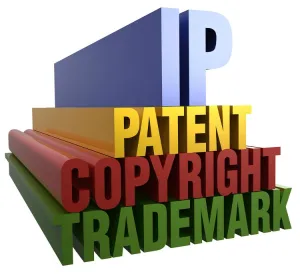Recent covered business method (CBM) review decisions by the Patent Trial and Appeal Board (PTAB) demonstrate that the US Court of Appeals for the Federal Circuit’s Enfish decision will not act as a panacea to save the patent eligibility of software inventions. Rather, Enfish’s impact will be limited to cases involving software that improves the functioning of computers, as opposed to using generic computers to facilitate business practices. Life Techs. Corp. v. Unisone Strategic IP, Inc., Case No. CBM2015-00037 (PTAB, June 28, 2016) (Bonilla, APJ); Informatica Corp. v. Protegrity Corp., Case No. CBM2015-00021 (May 31, 2016) (Turner, APJ). Another recent decision declining to institute CBM review on eligibility grounds is not to the contrary. HP Inc. v. Big Baboon, Inc., Case No. CBM2016-00020 (PTAB, June 28, 2016) (Ward, APJ).
In Life Technologies, the PTAB instituted CBM review of claims to computerized methods and systems for aggregating inventory information from multiple customers in order to facilitate more economical inventory management. The claimed technology used generic computers, and the patent specification taught that several commercially available software products could be used in the invention. In the PTAB’s final written decision, it found that the claims were directed to the abstract idea of inventory management. Addressing Enfish, the PTAB recognized “that the Federal Circuit recently has stated that the first step of our [Alice eligibility] analysis should not be pro forma when the claims are directed to improvements in software.” Nonetheless, the PTAB found that the claims were directed to an abstract idea because they were not directed to “a specific improvement in the way computers operate.” Because the claims also were insufficiently limited to confer eligibility under step two of the Alice test, the PTAB determined the claims patent ineligible.
In Informatica, the PTAB also struck down software-related claims as patent ineligible. The claims were drawn to a “data security system” wherein a first database stores encrypted entries and, when queried, automatically generates a call to a second database that stores “protection attributes,” such as user permissions. The system provided access to data in the first database only when the second database’s “rules” were satisfied. In its final written decision, the PTAB concluded that the claims were directed to the abstract idea of “determining whether access to data should be granted based on whether one or more rules are satisfied.” Citing Enfish, the PTAB again recognized “that the first step of our [eligibility] analysis should not be pro forma when the claims are directed to improvements in software.” However, the PTAB found that the claims were not “directed to a specific improvement to the way computers operate,” rejecting the patent owner’s argument that providing or restricting database access was a problem unique to computers. Accordingly, and because the claims were insufficiently limited to confer eligibility at Alice step two, the PTAB found the claims patent ineligible.
In the third case, HP v. Big Baboon, the PTAB declined to institute CBM review of claims directed to a web-enabled “circular automated business process” that aggregated information from different departments within one or more businesses to provide an “integrated decision-making environment for a particular business function.” The petitioner argued that the claims were patent ineligible as “directed to the abstract economic concept of gathering information from across a business and using the information to make decisions.” The PTAB rejected this characterization because the challenged claims did not “recite any ‘gathering’ steps, and Petitioner does not explain sufficiently how the limitations of [the] claim . . . are directed to the concept of ‘gathering’ information.” The PTAB concluded that the petitioner failed to show that the challenged claims were “more likely than not directed to patent ineligible subject matter under 35 USC § 101,” and accordingly declined to institute review.
Practice Note: Although the claims in HP were not struck down despite their similarity to the claims in Life Technologies and Informatica, the cases are not inconsistent. The PTAB never ruled on the merits of the eligibility challenge in HP, deciding instead that the eligibility challenge was insufficiently pled. By contrast, Life Technologies and Informatica are merits decisions, and both found Enfish inapplicable to software inventions not directed to improvements in computer functionality. These decisions show that the impact of Enfish is likely to be limited, because many software inventions are directed to facilitating otherwise well-known functions rather than improving the functioning of computers themselves.
A takeaway from the HP decision is that the PTAB will not make arguments sua sponte that the parties have not sufficiently made for themselves. Practitioners should specifically address the language of challenged claims and explain their arguments with particularity even if the outcome seems obvious.



 />i
/>i

